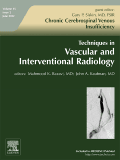
Techniques in Vascular and Interventional Radiology
Scope & Guideline
Pioneering Techniques for Tomorrow's Vascular Solutions.
Introduction
Aims and Scopes
- Interventional Techniques and Procedures:
The journal covers a wide range of interventional techniques, including image-guided biopsies, embolizations, and minimally invasive procedures for various conditions, emphasizing advancements in procedural methodologies. - Pediatric Interventions:
A significant focus on pediatric cases highlights the unique challenges and techniques required for interventional procedures in children, addressing specific conditions such as venous anomalies and thromboembolic diseases. - Transplant Interventions:
The journal includes a robust section on interventions related to organ transplantation, covering complications and management strategies, which is critical for improving patient outcomes in transplant medicine. - Emerging Imaging Technologies:
Research on novel imaging technologies such as robotics, augmented reality, and advanced imaging modalities underpins the journal’s commitment to integrating cutting-edge technology into interventional practices. - Office-Based Practices:
A growing emphasis on office-based labs (OBLs) and their operational models reflects the journal's recognition of the shift in interventional radiology towards outpatient settings, promoting discussions on efficiency and patient care. - Multidisciplinary Collaboration:
The journal advocates for a multidisciplinary approach in managing complex conditions, fostering collaboration between interventional radiologists and other medical specialties to enhance patient care.
Trending and Emerging
- Robotics and Automation in Interventional Procedures:
An increasing number of publications focus on the integration of robotics and automation in interventional radiology, highlighting the potential for improved precision, reduced complications, and enhanced procedural outcomes. - Office-Based Interventional Practices:
There is a significant trend towards research on office-based lab models, showcasing the shift in interventional radiology towards outpatient care, which is crucial for improving patient access and reducing healthcare costs. - Advanced Imaging Techniques:
Emerging themes in advanced imaging technologies, such as virtual reality and augmented reality applications, are gaining momentum, reflecting a push towards improving procedural guidance and training. - Pediatric Interventional Radiology:
The journal has seen a rise in interest in pediatric interventional radiology, focusing on the unique challenges and innovations required for treating conditions in younger populations. - Management of Complications in Transplant Patients:
Research on the management of complications arising from organ transplants is gaining prominence, underscoring the importance of interventional radiology in enhancing transplant outcomes.
Declining or Waning
- Traditional Open Surgical Techniques:
As interventional radiology advances, there is a noticeable decline in research related to traditional open surgical methods, as more emphasis is placed on minimally invasive alternatives that offer better patient outcomes. - General Vascular Disease Management:
Papers focusing on broad vascular disease management without a specific interventional angle have decreased, indicating a shift towards more specialized and technique-oriented research. - Basic Imaging Techniques:
There is a waning interest in basic imaging techniques, as the field progresses towards advanced imaging modalities and technologies that provide better guidance and outcomes in interventional procedures. - Less Focus on Non-Vascular Interventions:
While the journal covers a wide range of interventional procedures, there appears to be a decline in publications addressing non-vascular interventional techniques, suggesting a narrowing of the journal's focus towards vascular-related topics. - Historical Perspectives in Interventional Radiology:
Research that delves into historical practices or perspectives in interventional radiology is becoming less common, as the field prioritizes contemporary challenges and innovations.
Similar Journals
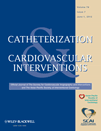
CATHETERIZATION AND CARDIOVASCULAR INTERVENTIONS
Pioneering Minimally Invasive Solutions for Heart HealthCatheterization and Cardiovascular Interventions is a leading peer-reviewed journal published by Wiley, dedicated to advancing the fields of cardiology, cardiovascular medicine, and radiology. With an impressive impact factor and categorized in the Q1 quartile across multiple disciplines—including Cardiology, Medicine, and Radiology—this journal serves as an essential resource for researchers, clinicians, and students interested in the latest developments in minimally invasive techniques and innovative cardiovascular therapies. Since its inception in 1999 and continuing through 2024, Catheterization and Cardiovascular Interventions has provided a platform for high-quality original research, reviews, and case studies, highlighting approaches that improve patient outcomes and treatment methodologies. Operating from the United States, the journal offers various access options, making key findings in cardiovascular interventions readily available to its audience. Stay at the forefront of cardiovascular innovation by engaging with this pivotal publication.

JOURNAL OF VASCULAR AND INTERVENTIONAL RADIOLOGY
Connecting Knowledge and Practice in Interventional RadiologyJOURNAL OF VASCULAR AND INTERVENTIONAL RADIOLOGY, published by Elsevier Science Inc, is a leading interdisciplinary journal dedicated to the advancement of vascular and interventional radiology research and practice. With an ISSN of 1051-0443 and an E-ISSN of 1535-7732, this esteemed journal serves as a vital platform for disseminating high-quality research from 1990 to present, showcasing significant contributions in the fields of cardiology, cardiovascular medicine, and radiology. The journal holds a commendable position within its categories, being ranked in the Q2 quartile for 2023 in cardiology and cardiovascular medicine as well as radiology, nuclear medicine, and imaging, indicating its relevance and impact within these domains. A notable aspect of this journal is its commitment to enlightening the medical community with cutting-edge findings and innovative techniques in interventional radiology, which are crucial for improving patient outcomes. Despite not being an open-access journal, it remains widely accessible through institutional subscriptions, ensuring that researchers, healthcare professionals, and students can engage with and contribute to its rich repository of knowledge.

Clinical Neuroradiology
Bridging Science and Clinical Application in Neuroimaging.Clinical Neuroradiology, published by SPRINGER HEIDELBERG, is a leading journal in the fields of neurology and radiology, focusing on the intersection of clinical practice and cutting-edge imaging technologies. With an impressive impact factor and categorized within Q2 in Neurology (clinical) and Q1 in Radiology, Nuclear Medicine and Imaging, this journal is positioned at the forefront of scientific discourse, facilitating high-quality research dissemination from its origins in 2000 through to 2024. Situated in Germany, Clinical Neuroradiology provides a platform for researchers, professionals, and students to explore the latest advancements and insights in neuroimaging, ensuring that its readership remains at the vanguard of clinical practice. While it does not offer open access, the journal remains committed to fostering a vibrant academic community dedicated to enhancing patient care through innovative neuroradiological techniques and findings.

AMERICAN JOURNAL OF ROENTGENOLOGY
Leading the Way in Radiological Science.AMERICAN JOURNAL OF ROENTGENOLOGY (AJR), published by the American Roentgen Ray Society, stands as a beacon of excellence in the fields of Radiology, Nuclear Medicine, and Imaging. With an impressive impact factor positioning it in the Q1 category of both Medicine (Miscellaneous) and Radiology as of 2023, AJR is ranked 13th out of 333 journals in its category, reflecting its prominent presence and high relevance in advancing medical imaging knowledge and practice. Established in 1973 and continuing through to 2024, the journal encompasses a broad spectrum of research, critical reviews, and innovative techniques, making it a vital resource for researchers, healthcare professionals, and students alike. Although it does not currently offer open access options, AJR ensures that its rigorous, peer-reviewed content remains accessible to a global audience committed to the evolution of radiological science. With its home base in Leesburg, Virginia, AJR not only informs but also inspires advancements in radiology, enhancing diagnostic practices and patient care globally.
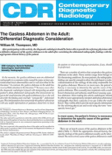
Contemporary Diagnostic Radiology
Pioneering Research in Contemporary RadiologyContemporary Diagnostic Radiology is a pivotal journal in the field of medical imaging and radiology, published by Lippincott Williams & Wilkins. With an ISSN of 0149-9009 and an E-ISSN of 1938-1395, this journal serves as an essential platform for disseminating high-quality research and advances in diagnostic radiology and related disciplines. While it is categorized in the lower quartiles (Q4) for its performance in the 2023 rankings in both Neurology, Radiology, Nuclear Medicine and Imaging, and Surgery, its focus on emerging technologies and methodologies in imaging continues to provide valuable insights for practitioners and researchers alike. The journal’s scope includes innovative diagnostic tools, imaging techniques, and case studies, fostering collaboration and knowledge sharing in the medical community. Although it does not offer open access options, its commitment to contributing to the ongoing dialogue in clinical imaging is undisputed, making it an essential resource for professionals seeking to stay abreast of current trends and research in the rapidly evolving landscape of diagnostic radiology.
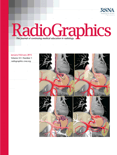
RADIOGRAPHICS
Connecting Professionals through Premier Radiological ResearchRADIOGRAPHICS, published by the Radiological Society of North America (RSNA), is a premier academic journal dedicated to the field of radiology, nuclear medicine, and imaging. With an impressive impact factor and recognition in the top quartile (Q1) of both Medicine (miscellaneous) and Radiology, Nuclear Medicine and Imaging categories, RADIOGRAPHICS stands out as a leading platform for disseminating high-quality research and clinical findings. Since its inception in 1985 and projected to run until 2024, the journal has consistently provided essential insights into cutting-edge imaging techniques and advancements in radiological practices, making it invaluable for professionals, researchers, and students alike. Although it does not offer open access, the journal continues to flourish with a robust reputation, ranked 35th in its field according to Scopus, placing it within the 89th percentile of its category. With an unwavering commitment to enhancing the understanding and application of radiological sciences, RADIOGRAPHICS remains a pivotal resource for advancing knowledge and expertise within the medical community.

Radiologie
Innovating Diagnostic Accuracy Through Cutting-Edge ImagingRadiologie, published by SPRINGER HEIDELBERG, is an emerging journal dedicated to the fields of radiology, nuclear medicine, and imaging. With an ISSN of 2731-7048 and E-ISSN 2731-7056, this journal does not currently offer open access, providing a traditional yet respected platform for scholarly communication. Founded in 2022, it aims to advance the understanding of cutting-edge imaging techniques and their applications in clinical practice, contributing to improvements in diagnostic accuracy and patient care. Despite its recent establishment, Radiologie is positioned within the Q4 quartile category, reflecting its developing presence in the academic landscape, with a current Scopus rank of #231 out of 333 in its category. The journal serves as a vital resource for researchers, professionals, and students seeking to stay abreast of the latest developments in radiological science, imaging technology, and their clinical implications, ensuring ongoing engagement and advancement in this critical area of healthcare.

EUROPEAN RADIOLOGY
Exploring Innovations in Diagnostic ImagingEUROPEAN RADIOLOGY, published by SPRINGER, stands as a prestigious international journal in the field of radiology, nuclear medicine, and imaging, with an impressive impact factor that underscores its significance among peers. With an ISSN of 0938-7994 and an E-ISSN of 1432-1084, this journal provides a platform for cutting-edge research and advancements in medical imaging from 1991 to 2024. Recognized as a Q1 journal in both general Medicine and the specialized Radiology category by 2023, EUROPEAN RADIOLOGY ranks an impressive #17 out of 333 in its field according to Scopus, placing it in the 95th percentile. While it does not currently offer Open Access options, the journal remains essential reading for researchers, professionals, and students striving to stay at the forefront of developments in diagnostic imaging and related technologies. By contributing to a comprehensive understanding of radiological practices, EUROPEAN RADIOLOGY plays a crucial role in shaping the future of medical diagnosis and patient care.
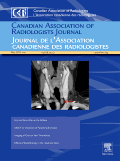
CANADIAN ASSOCIATION OF RADIOLOGISTS JOURNAL-JOURNAL DE L ASSOCIATION CANADIENNE DES RADIOLOGISTES
Inspiring Excellence: A Platform for Radiology's Brightest MindsCanadian Association of Radiologists Journal - Journal de l'Association Canadienne des Radiologistes, published by SAGE Publications Inc, stands as a vital resource in the realms of Radiology and Medicine. With an ISSN of 0846-5371 and an E-ISSN of 1488-2361, this esteemed journal offers insightful research articles and reviews that contribute to the advancement and practice of radiology, benefiting both seasoned professionals and emerging scholars. Holding a commendable Q2 ranking in both the fields of Medicine (miscellaneous) and Radiology, Nuclear Medicine and Imaging, the journal is recognized for its impactful publications, positioning its content within the top 40% of global research outputs. Since its inception in 1973 and continuing through to 2024, it has consistently provided a platform for cutting-edge research and clinical innovations, facilitating knowledge transfer among practitioners and educators. The journal’s significant influence is evidenced by its Scopus rank of #67 out of 333 in its category, placing it in the 80th percentile of academic excellence. Although it does not offer open access, its contributions are critical for advancing the field, making it essential reading for all those invested in the evolution of radiological sciences.

SA Journal of Radiology
Exploring the Future: Advancements in Radiology and UltrasoundThe SA Journal of Radiology is a prominent open-access journal published by AOSIS, dedicated to advancing knowledge in the fields of Radiology and Ultrasound Technology. Established in 2004, this South African journal provides a platform for researchers, professionals, and students to disseminate valuable findings and share innovative practices in medical imaging. With an ISSN of 1027-202X and an E-ISSN of 2078-6778, the journal has become an important resource for those involved in radiological sciences, despite currently holding a Q4 ranking in both Radiological and Ultrasound Technology and Radiology, Nuclear Medicine and Imaging categories. Covering a converged time span from 2014 to 2024, the journal aims to promote scholarly communication and enhance the accessibility of research, positioning itself as a key player in the global radiological community. In a landscape where open access is increasingly critical, the SA Journal of Radiology is committed to fostering research collaboration and facilitating the exchange of ideas among clinicians and academics alike.